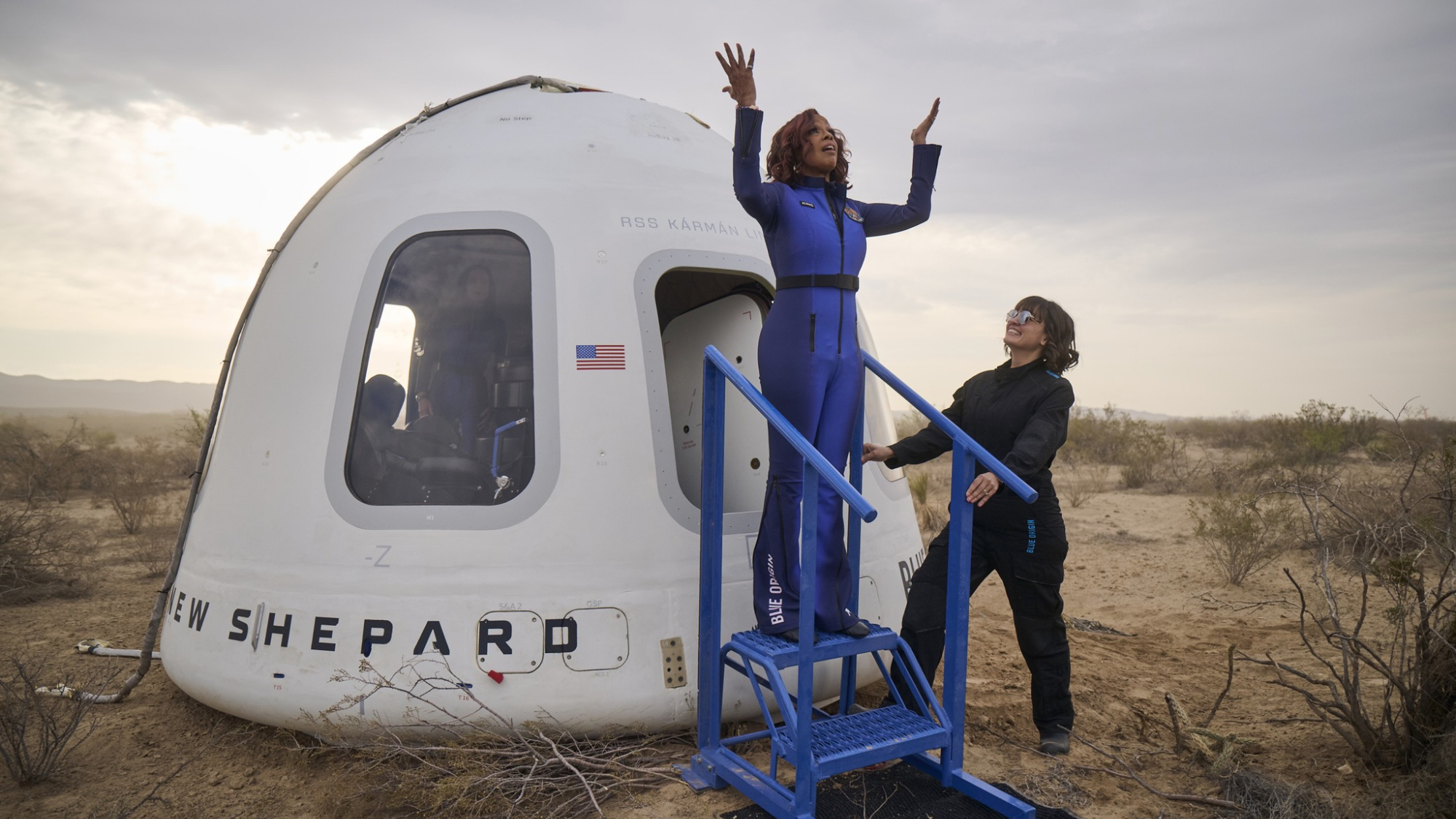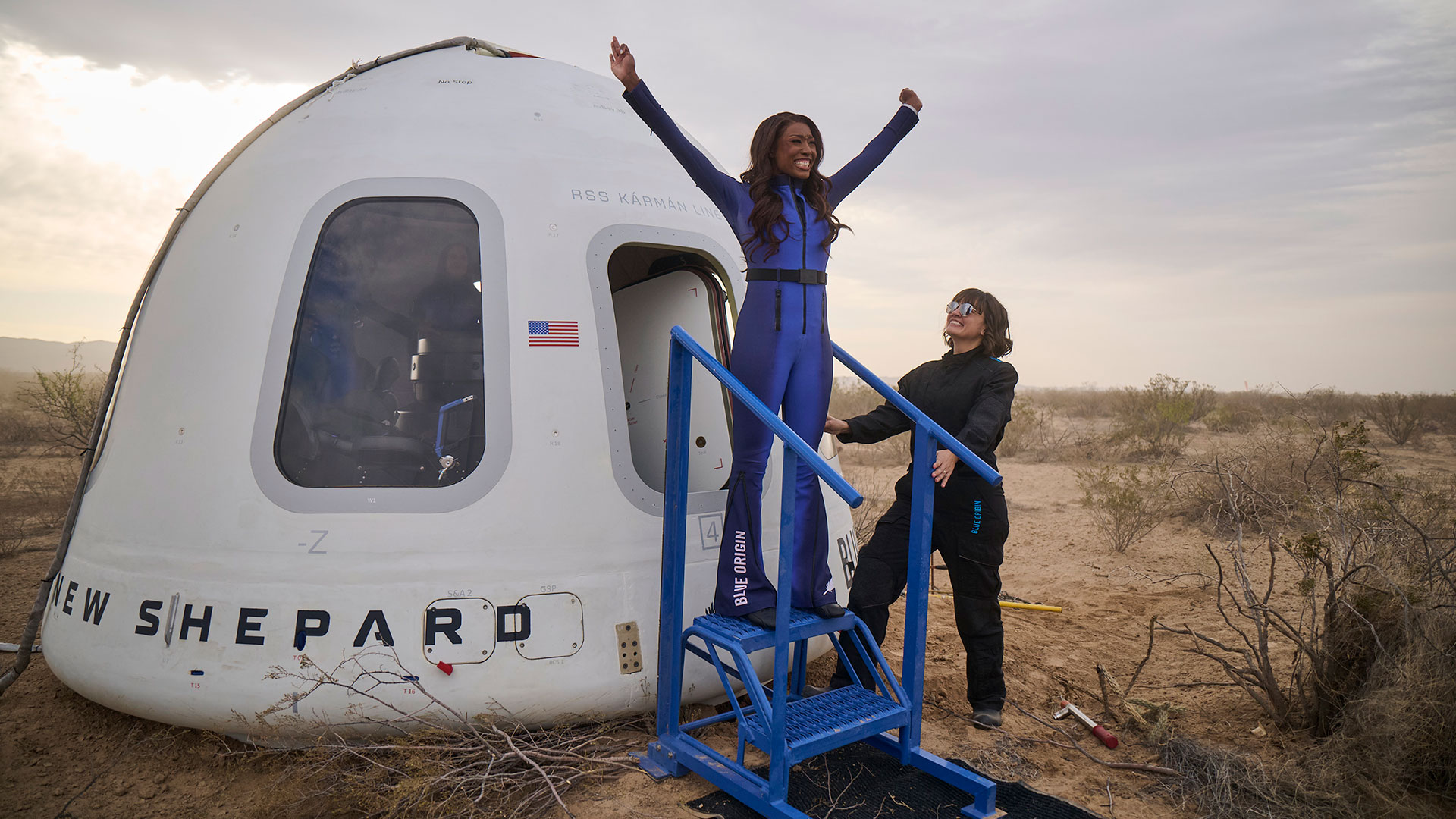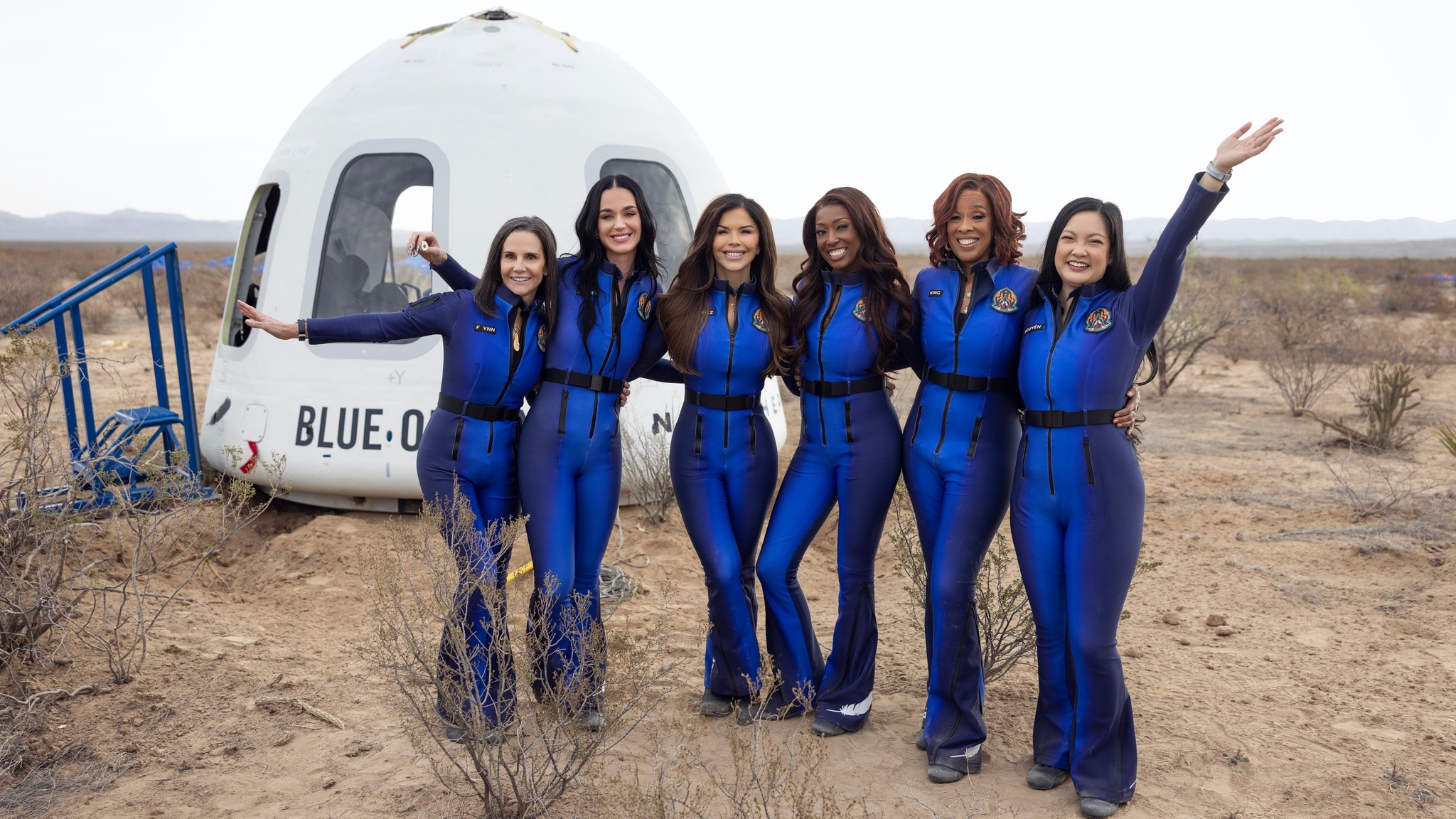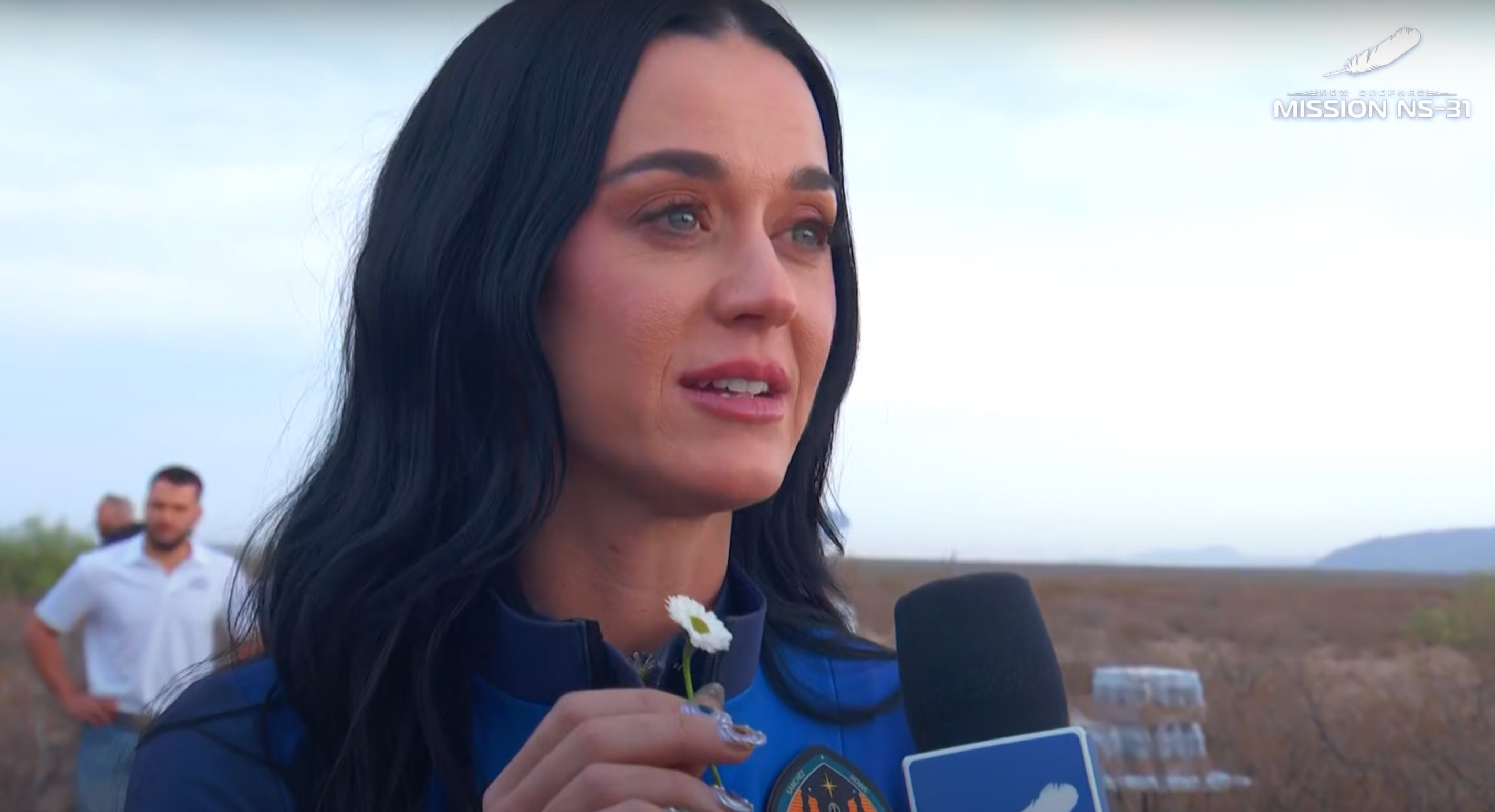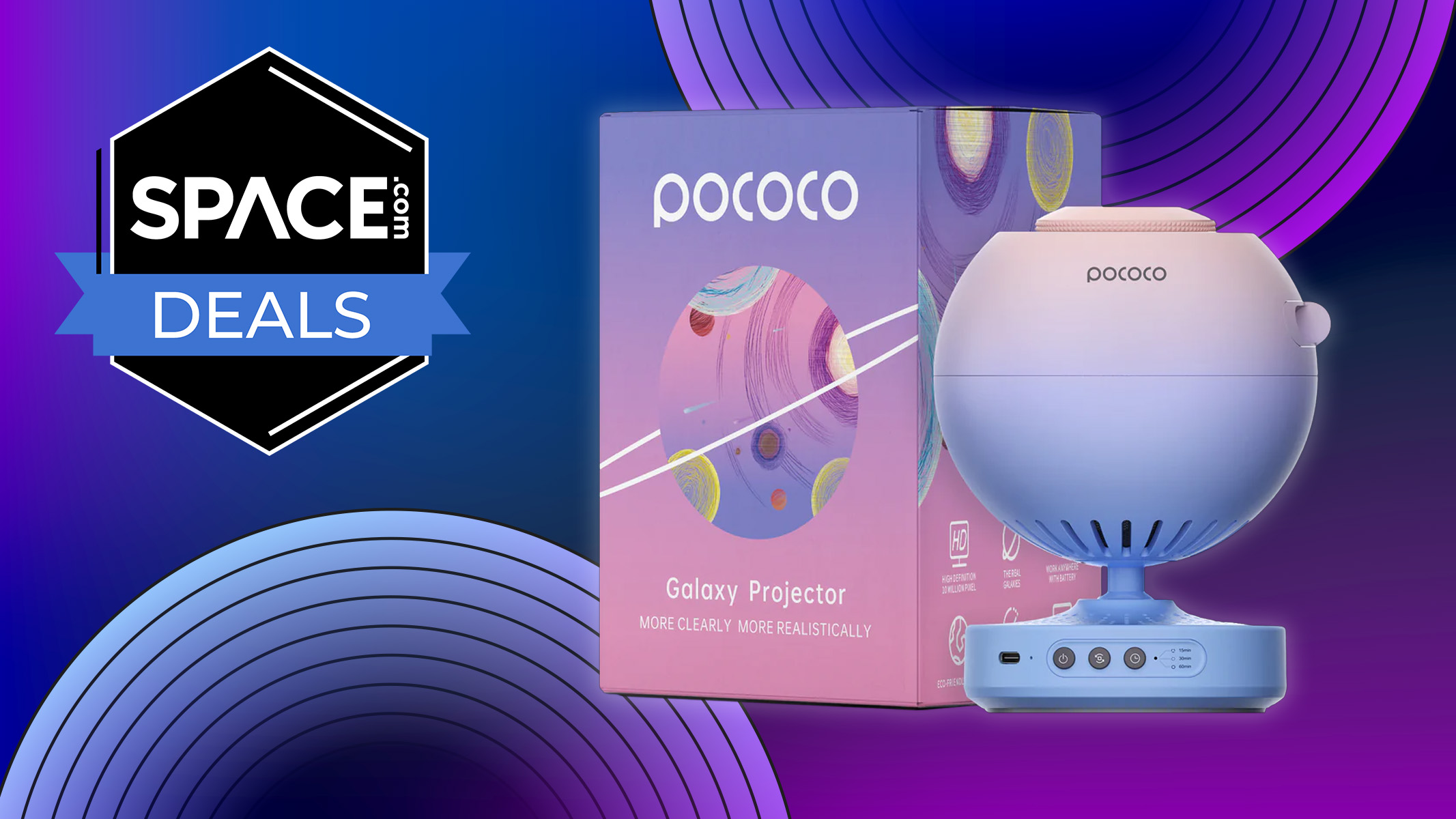Omega, Tang and Fruit of the Loom: The real and fake ads in 'Fly Me to the Moon'
'There were so many products at that time that we still associate with the astronauts.'

"Brands get a tie-in money can't buy and NASA works its way into the minds of everyday people."
That is the pitch made by marketing maven Kelly Jones (Scarlett Johansson) in the new movie "Fly Me to the Moon," now in theaters. A fictional romantic comedy set against a sometimes accurate but often not retelling of the Apollo 11 moon landing, the film is loosely based on NASA's real efforts to sell the moon missions to the American public and the world.
"In reality, it was a team of marketers and they were all men. In our case, it is one person and she's a woman," said Greg Berlanti, director of "Fly Me to the Moon," in an interview with collectSPACE. "I was born in '72 and I grew up knowing Tang and Omega watches and how associated they were with the program. There were so many products at that time that we still associate with the astronauts."
Like most of the movie, which seamlessly blends the real and the fake, "Fly Me to the Moon" features products that were actually on board Apollo 11 and others that had no link to the space program at all. The mix, perhaps inadvertently, underscores an exchange between Jones (Johansson) and Cole Davis (Channing Tatum), NASA's launch director (in the movie; the actual Apollo 11 launch director was Rocco Petrone).
"We don't have to send any of this stuff into space so long as we say it went," says Jones.
"Oh, so you're going to lie," replies Davis.
"It's called selling. We're not lying to the customer. We're changing the way they think," Jones says.
Related: Apollo Moon Landing Hoax Theories That Just Won't Die
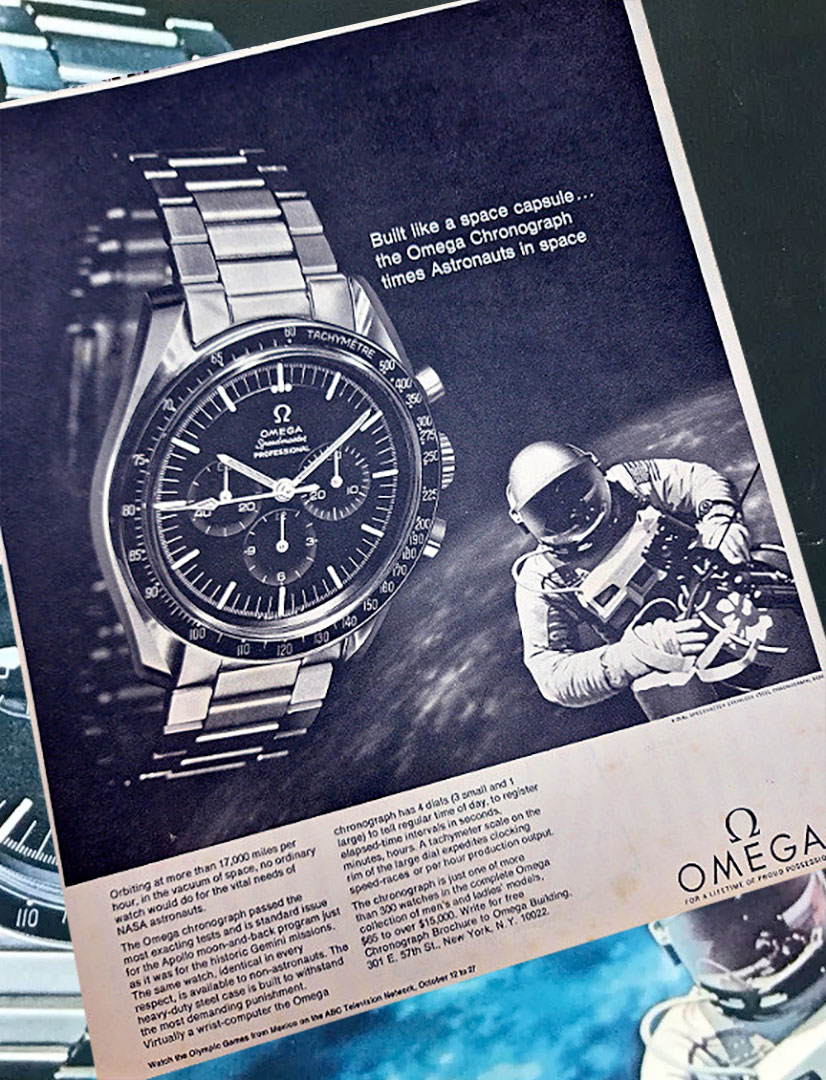
As seen in space (or not)
"There's a scene that has all of Kelly's ads when she starts selling and bringing them all together. Some of them were based on actual materials that we saw and that we were able to refine and others were ones that, like Rice Krispies, that we added our own "Snap, Crackle and Pop" fun to," said Berlanti. "I kept waiting for someone to say, 'Oh, we're not allowed to use that,' but everyone was cool with it."
The first layout that Jones unveils is for Omega, the Swiss watchmaker. "Built like a space capsule... the Omega Chronograph times Astronauts in space," reads the enlarged ad.
The design, which includes a NASA photo of first U.S. spacewalker Ed White and a close-up of the Omega Speedmaster Professional looks like it came straight out of a magazine — and that is because it did. The exact advertisement ran in periodicals and newspapers in 1968 (all the way down to the fine print promoting the Olympic Games in Mexico airing on the ABC Television Network that October).
Like all of the products that were advertised for having an association with the space program, NASA did not select the Speedmaster as a way to win the hearts and minds of watch enthusiasts, but rather because it was the only model capable of passing its tests to ensure it would reliably work in space and on the moon. The bragging rights were a bonus (almost every Speedmaster that Omega has sold since has been inscribed with "The first watch worn on the moon.").
Jones' next ad is for Crest, "the only brand trusted by Astronauts." Only it wasn't. Due to the lack of a water basin or other means of rinsing out their mouths after brushing, the astronauts used an editable (i.e. swallowable) toothpaste developed by NASA.
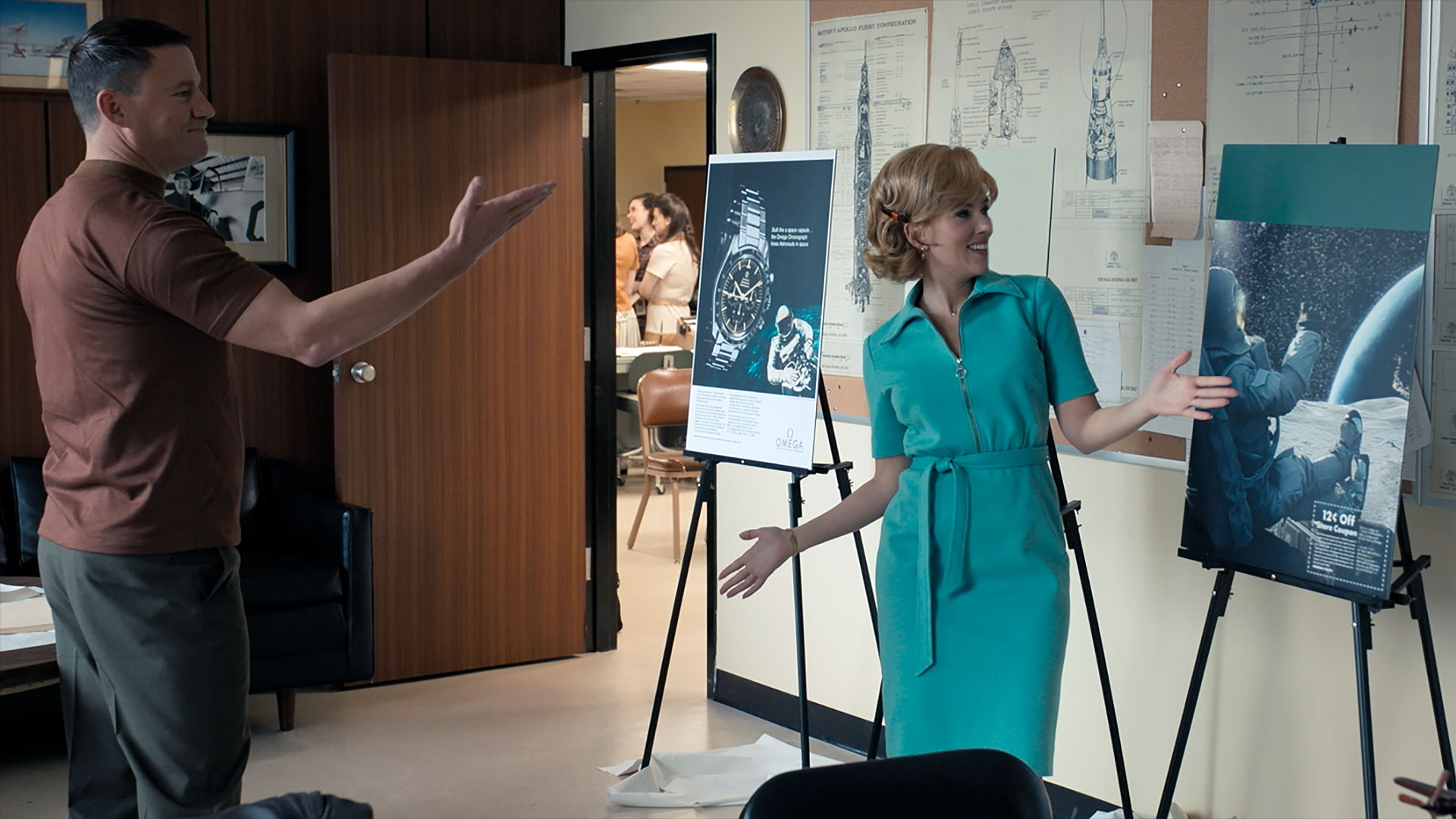
Conversely, Tang was famously consumed by the space agency's crew members (though, contrary to a widely-spread myth, the General Foods' powdered drink mix was not invented for NASA but rather was an off-the-shelf solution for the metallic tasting water on early American spacecraft).
The Tang ad that Jones shows Davis was created for the movie (using a modified image of an astronaut reclining on the moon; the original art has the spaceman holding up a smart phone). It is based, however, on the a real Tang promotion, which used a NASA photo of Earth from the moon and a 12-cent store coupon "for Earth people only."
Jones reads out, "the energy breakfast drink chosen for Apollo astronauts on their trip to the moon." A similar tagline appeared in the real ad, "The energy breakfast drink of earth. Chosen for Apollo astronauts in outer space."

The fourth and final ad in the scene is Jones' favorite, Fruit of the Loom. "Your guys gotta wear something under those big [space]suits, don't they?" she asks rhetorically. This idea did not fly, at least not in real life. The ad feature a 2020 stock photo of a boy wearing a homemade rocket pack with the made-up-for-the-movie text, "Comfort that will take you new places."
Two sides of the moon
Had the "Fly Me to the Moon" filmmakers only wanted to use items that actually advertised their role on Apollo, they could have chosen from Sony tape recorders, Stouffer's prepared foods or RCA cameras, among others, as documented in the book, "Marketing the Moon: The Selling of the Apollo Lunar Program" by David Meerman Scott and Richard Jurek (2014, MIT Press).
Other fictional product ads seen in the film include the aforementioned Kellogg's Rice Krispies and Peter Pan peanut butter.
Get the Space.com Newsletter
Breaking space news, the latest updates on rocket launches, skywatching events and more!
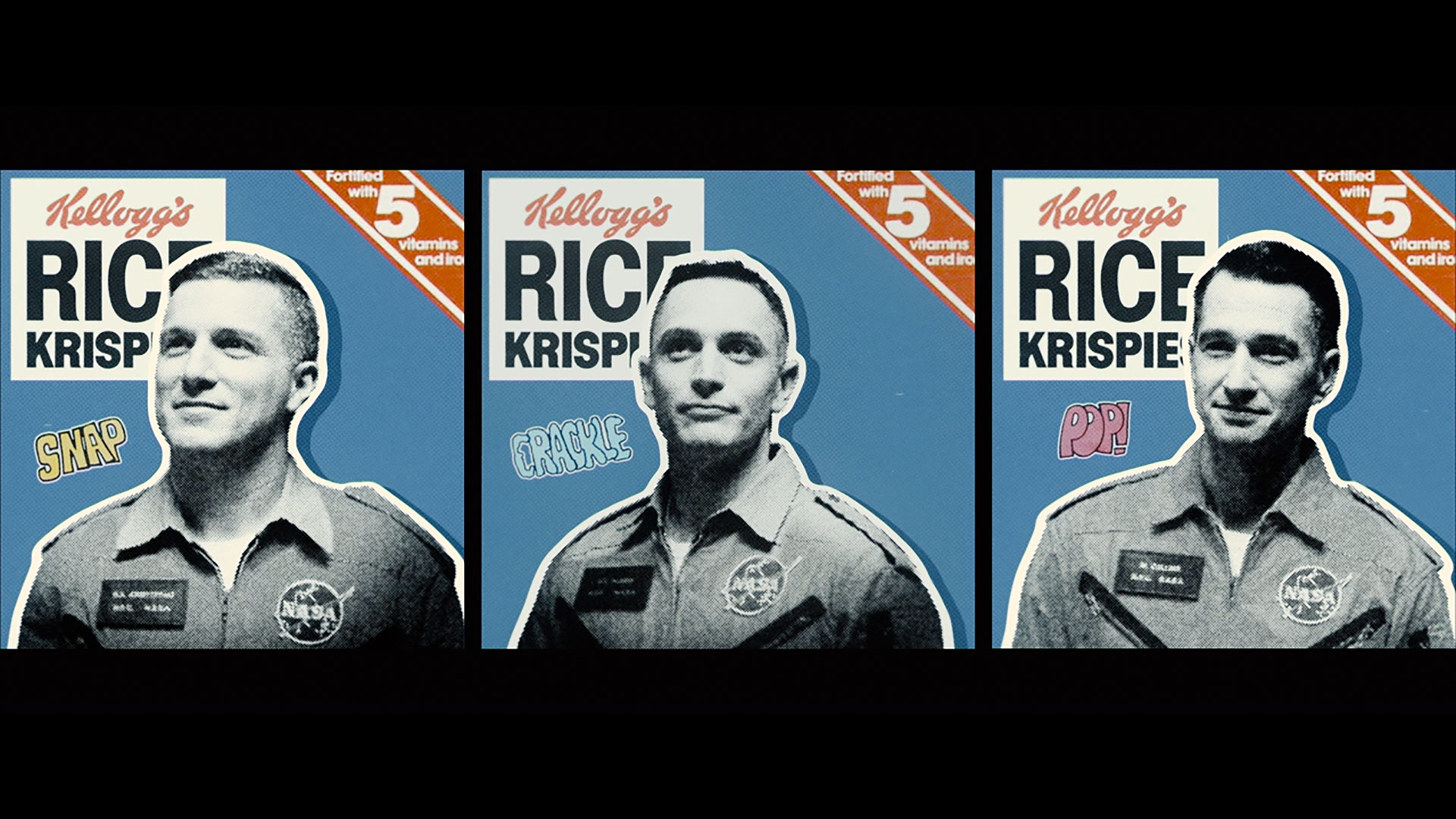
Beyond the commercial layouts, "Fly Me to the Moon" also includes other ways that NASA worked to sell the Apollo program to the public, including arranging for a contract with LIFE magazine to share the astronauts' personal stories. NASA also held regular press conferences, as depicted in the film, although the idea put forth by Jones to get the engineers and astronauts out from behind a desk did not come until much later in the agency's history.
A scene also shows the three Apollo 11 astronauts driving Corvettes. While the space agency was not keen on Chevrolet just giving away its cars, a local dealer, Jim Rathman, offered to lease brand new Corvettes and other cars to the Mercury, Gemini and Apollo astronauts for just one dollar per year. When the cars were returned, Rathman sold them to the public, now having added the provenance that they had been driven by the astronauts.
"One of my favorite aspects of American history is that it is really filled with two types of characters that drive it," said Berlanti, who minored in American history in college. "One are these sort of dreamers who are like, 'We're going to do that!' and then there are all the hard-working, practical people who actually then make that dream a reality."
"When Kennedy said at the beginning of that decade that we're going to go to the moon, there was no evidence that that could ever happen, right?" he said. "So we reflect on that in the movie, and I love that Scarlett's character and Tatum's character are the two sides of that. Kelly is the type of person who makes a bunch of stuff up and is always trying to sell people something and Cole is one those individuals who makes what she's selling a reality. But it takes both types for the moon landing to happen."
Click through to collectSPACE to watch a clip from "Fly Me to the Moon."
Follow collectSPACE.com on Facebook and on Twitter at @collectSPACE. Copyright 2024 collectSPACE.com. All rights reserved.
Join our Space Forums to keep talking space on the latest missions, night sky and more! And if you have a news tip, correction or comment, let us know at: community@space.com.

Robert Pearlman is a space historian, journalist and the founder and editor of collectSPACE.com, a daily news publication and community devoted to space history with a particular focus on how and where space exploration intersects with pop culture. Pearlman is also a contributing writer for Space.com and co-author of "Space Stations: The Art, Science, and Reality of Working in Space” published by Smithsonian Books in 2018.In 2009, he was inducted into the U.S. Space Camp Hall of Fame in Huntsville, Alabama. In 2021, he was honored by the American Astronautical Society with the Ordway Award for Sustained Excellence in Spaceflight History. In 2023, the National Space Club Florida Committee recognized Pearlman with the Kolcum News and Communications Award for excellence in telling the space story along the Space Coast and throughout the world.

